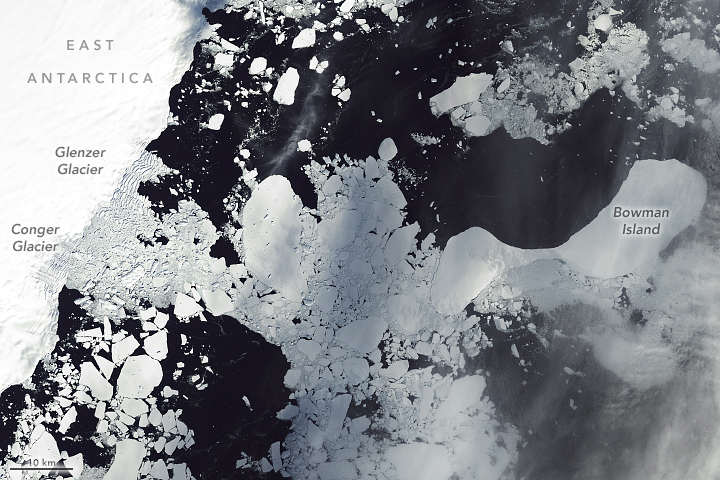“Exclamation point”: Ice-shelf collapse signals East Antarctic instability
9 December 2024
The collapse of an ice shelf in 2022 is a warning sign that East Antarctica may not be as stable as previously assumed.
In a paper published in Nature Geoscience, Australian and international scientists used satellite images to track the loss of the Conger-Glenzer Ice Shelf, showing that its collapse was the culmination of four stages that started in 1996 and spanned 25 years.
Lead author Dr Catherine Walker from Woods Hole Oceanographic Institution wrote in a blog post that the event marks a first for East Antarctica and was caused by ocean warming rather than surface melt.
“Long considered more stable than the West Antarctic Ice Sheet, this event added an exclamation point to the accelerating narrative of unexpected changes being observed in East Antarctica.”
“Conger-Glenzer’s collapse serves as a small example of how to observe future changes and highlights our evolving understanding of early warning indicators for potential ice shelf collapse in the future,” she wrote.


Floating ice shelves fringe two-thirds of the Antarctic coastline, and play an important role as ‘buttresses’ that restrain the flow of the ice sheet into the ocean through glaciers.
The Conger-Glenzer was a small ice shelf by Antarctic standards, and its collapse will have little immediate impact on global sea levels. However, it was part of the much larger Denman Glacier-Shackleton ice-shelf system.
Co-author Dr Sue Cook, glaciologist with the Australian Antarctic Program Partnership at the University of Tasmania, said the Conger-Glenzer evolution shows that the loss of an ice shelf due to warming is committed long before its eventual demise.
“This was the first major ice shelf collapse observed in East Antarctica, with 1200-square kilometres disappearing over a few days in the face of a major storm.”
“But the storm was just the last straw. The process of disintegration happened over decades, as the warming ocean made the ice shelf thinner and weaker and prone to fracture.”
“It raises the question of whether other East Antarctic ice shelves — with the potential to unleash much greater contributions to global sea-level rise — may become vulnerable to collapse as these conditions become more prevalent.”
READ THE PAPER: Multi-decadal collapse of East Antarctica’s Conger–Glenzer Ice Shelf



